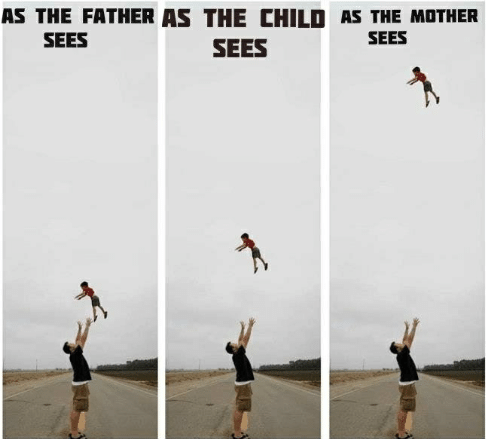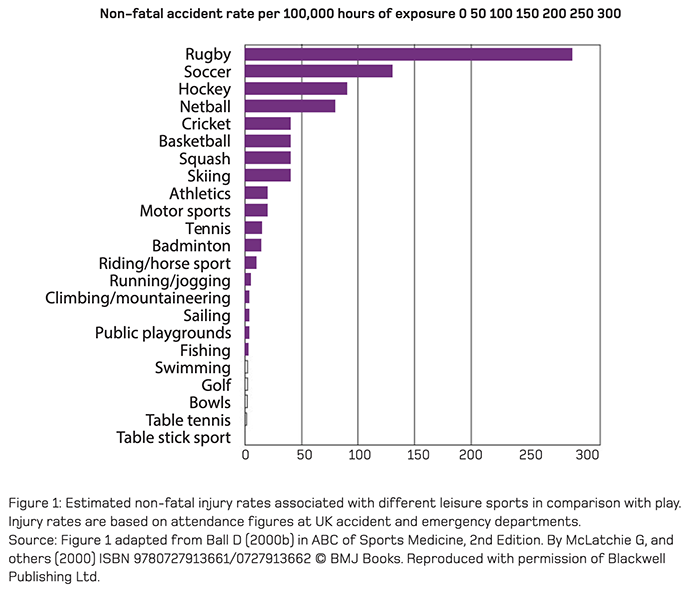The Benefits of Risk: Building Resilience through Risky Play
The Existence of Risk
A few weeks ago, the AQI in Shanghai shot up to over 500. At the time, I was leading the Junior School outdoor learning experience in Chongming, and keeping my eyes on the local levels. We had factored in a Plan B for high AQI, but the chances of it being quite so high were extremely slim. Thankfully, due to winds, the cloud of pollution didn’t hit us. This caused me to think – I had never grown up having to consider the air that I breathe, and although poor air quality won’t make us sick immediately, breathing enough of it will over time. The same thing applies to water. At home in Ireland, I drink water straight from the tap. Here, I explain to visitors that they shouldn’t worry if they accidentally use the tap water to brush their teeth. It won’t make them sick immediately, but drink enough of it over time and it will. These are risks that we take, and expose our children to, simply by living our daily lives. We need air and water to live, so there is no way around these risks.
These are just very small examples of how we live with risk every day. The media does a good job of bombarding us with stories of tragedy – misadventure and life gone wrong. The rarest, most unusual and least likely scenarios from every-day life are shared with us as if they are common, daily occurrences, and as a result, we instinctively try to protect our families from these tragedies happening to us. We start to become averse to risk, and the ‘what if’ takes our imagination to the worst-case scenario.

When people become responsible for the safety of children, they view risk through a very different lens. Suddenly, regular household objects become deadly weapons, and strangers are potential kidnappers and murderers. And so we adapt ourselves into expert risk managers, and the commercial market is well aware of this. Baby proofing is a massive, growing industry, providing anxious parents with solutions to all kinds of risks – from baby helmets to cameras which allow you to watch your child sleeping from your living room. In school, we regularly confiscate and return GPS watches.
The Benefits of Risk
In order to help parents to make sensible choices, there have been many studies proving that exposure to risk is not only beneficial for children, but that it is a fact of life. When we attempt to eliminate all risk from children’s experience, we are fighting a losing battle.
Children are built to seek out challenge and risk – this behaviour is innate. In 2008, Play Wales published an article called ‘A Playworkers’ Guide to Risk’ which acknowledged the need to provide risk and challenge for children during play in order to keep them safe:
“Children need and seek out risk – it is a natural part of growing up – it is a way of learning how to survive. If we don’t introduce or support opportunities to experience risk in a play setting, children will seek the thrill and sense of achievement that comes with overcoming fears, in places that are less appropriate where there are no experienced people around to keep an eye on them. They can practice taking risks within the relatively safe setting of a play space”

When we give children the opportunity to take risks, they become more resilient to failure, have greater independence, and become much more competent self-managers. This message was supported by the Health and Safety Executive of England in 2012.
“…. mistaken health and safety concerns create sterile play environments that lack challenge and so prevent children from expanding their learning and stretching their abilities. Play is great for children’s well-being and development. When planning and providing play opportunities, the goal is not to eliminate risk, but to weigh up the risks and benefits. No child will learn about risk if they are wrapped in cotton wool”
“HSE fully recognises that play brings the world to life for children. It provides for an exploration and understanding of their abilities; it helps them to learn and develop; and exposes them to the realities of the world in which they live, which is not free from risk but rather one where risk is ever present”
When we sterilise playgrounds and environments, and take away every single hazard and risk, the research shows that we end up making them unatttractive for children, leaving them with no alternative but to find risk elsewhere.
Structured Play and Risk Management
Many parents seek a middle ground with risk, often deciding that children, when left to their own devices to play, will lead to injury. They try to support play by engaging in structured activities such as sports clubs, and believe that the play that takes place in these settings will offer much lower risk due to the presence of trained coaches and adult supervisors. In 2012, the Play Safety Forum (UK), carried out a comparative analysis of 100,000 hours of play exposure over a number of activities, and the number of non-fatal injuries.

The report concluded that‚ “Participation in sports like football, widely acknowledged as ‘good’ for a child’s development involves a greater risk of injury than visiting a playground”
When communities create social norms around the introduction of risk and challenge from an early age, children benefit in terms of their competence. The Playworkers‘ Guide to Risk document points to cultural attitudinal differences that scaffold variable experiences for children growing up.
“In this country {the UK} our culture tends to suggest that children are incompetent and incapable – we start from a position of distrusting them to be able to fend for themselves.
In other cultures, even those as close to us as Northern Europe, small children use axes to chop firewood or walk to school on their own as a matter of custom – they are seen as competent and capable. They have been gradually introduced to these situations from an early age – they have gradually built up skills and confidence, the culture is that adults respect and trust children. The difference in the level of competence and capability between these children and those in our settings is our attitude towards them – the experience we provide them, the expectations we have and the assumptions we make.
These days our culture has grown to be more and more against taking risks; children may not have the opportunity to experience the simple pleasure of jumping off a wall or playing conkers, or catching raindrops in their open mouth, in their everyday lives. It is not long ago in history since children climbed trees, or made slides in the snow and no-one thought twice about it, it was considered natural and necessary. On very rare occasions a child would be harmed in their pursuit of thrills and spills, but this was considered an everyday part of life – an accident”

Getting the Balance Right – Risk/Benefit Analysis
Safeness is about enabling things to happen, not shutting down opportunities. — Playing Outside – Helen Bilton
It would be irresponsible to expose children to levels of risk and challenge which they are unable to cope with, and those which would result in serious harm. So how do we differentiate between good risk and bad risk? What is deemed to be acceptable and unacceptable in terms of exposure? At Dulwich College Shanghai Puxi, we start with designing an environment which offers children the right level of risk, and the opportunity to manage this risk independently. Our outdoor play spaces incorporate strong principles of design based on the types of challenge children should experience.
Sandseter (2007) categorises risky play into six different types of risks that helps us understand what children gravitate to when playing:
- Play with Great Heights (balancing, hanging, climbing, etc.)
- Play with High Speed (running, biking, sliding, etc.)
- Play with Dangerous Tools (sawing, cutting, whipping, etc.)
- Play near Dangerous Elements (water, fire, etc.)
- Rough and Tumble Play (wrestling, play fighting, etc.)
- Play Where Children Can Get Lost – (play in woodland, etc.)

By adapting a play area according to these categories, the risks assessors will enhance the benefits of risky play.
Our indoor environments are set up to replicate risks that children encounter in everyday life in their own home settings. When you walk through our Early Years’ department, you will spot glass jars, knives, toasters, real gardening tools, and even hammers and nails, and our children using them independently. We believe, that while there is still an element of risk of injury, that this risk is acceptable as the benefits of children harnessing the skills required to manipulate different types of tools out weights this risk. When weighing up acceptable and unacceptable risk, we base it on three factors:
- The likelihood of coming to harm
- The severity of that harm
- The benefits, rewards or outcomes of the activity

The HSE supports the development of confident professional practice in order to make sound judgements relating to risk and benefits:
“striking the right balance between protecting children from the most serious risk and allowing them to reap the benefits of play is not always easy. It is not about eliminating risk. Nor is it about complicated methods of calculating risk or benefits…...Sensible adult judgements are all that is required to derive the best benefits to chidlren while ensuring that they are not exposed to unnessesary risk”
There are times when children have accidents at school, and this is an unavoidable outcome of exposing them to risk. When this happens, we review the risk benefit analysis carefully in order to remove unacceptable risk.
“Appropriate risky play comes with many benefits for learning and development. However, bad risks are risks that don’t bring any substantial benefit for the child such as sharp edges, unstable heavy structures or traps for heads. Therefore, a previous risk assessment of the outdoor continuous provision or of a school playground is essential to understand which risks must be eliminated or minimised (bad risks) and which risks are worth taking (good risks)” — Cedric Pendrosa
Summary
While we believe that risk is an important part of growing up, we certainly do not take safety for granted. When things do go wrong, we welcome challenge and scrutiny to ensure that our practice is well considered, and that our constant assessment of risk is sound. We understand that environments which are too safe for children are a risk in themselves, and to that end, we embrace risk and seek to educate children to live in a world where risk is ever present – this is real life, and it comes with ups and downs. Let’s train our children to strive for the ups, and be resilient in the face of failure.

References
David Ball, Tim Gill and Bernard Spiegal. (2012). Managing Risk in Play Provision: Implementation Guide, Play Safety Forum
Play Wales (2008). A Playworkers’ Guide to Risk
Health and Safety Executive. (2012). Children’s Play and Leisure – Promoting a Balanced Approach





